Creativity and critique as resistance to the present in the art of Luca Staccioli
Looking at the entire and multifaceted oeuvre of Luca Staccioli (Imperia, 1988) it seems to be possible to reuse the words of the philosopher Maurice Merleau-Ponty, when he advocated the possibilities of a poetic consciousness to achieve “clarity through an operation that is not deductive, but creative.” Not differently seems to develop the attitude of Staccioli, who has established himself for some years now as one of the most original and interesting young talents on the contemporary art scene.
He also lived up to expectations at the recent edition of miart 2024 where he exhibited in the Emergent section, at the ArtNoble Gallery booth, the new series of glazed ceramic sculptures Multifunctional Kit Eliminator (prickly pear). The sculptural plants were proposed at the fair in an installation dimension, which seems to want to mimic the spontaneous colonies that dominate various glimpses of the Mediterranean landscape, to which the blue of the booth also winks happily, as if to recall those overused photos that immortalize prickly pear plants imposing themselves on the blue background between sky and sea, which we so like to bring back from our homologated seaside vacations. After all, the idea of souvenirs and stereotypical postcard representations is certainly not foreign to Staccioli’s poetics. On closer inspection, it only takes a closer look to realize that the natural idyll that the artist places before us is only a fiction, for on investigating the cactus blades more closely, one realizes how they are nothing more than casts of the snail-dispenser of those cards that regulate our waiting in supermarkets, stores and waiting rooms.
Through the reiteration of functional elements of consumption, Staccioli evokes a surreal and disorienting landscape between the natural and the anthropic. The historicized form, think for example of the series of paintings dedicated to Ennio Morlotti’s cacti, with which there seems to be a certain closeness in the pictorial implications of color, is dissociated and deformed by the insertion of a foreign element. Staccioli’s art drinks from these constant rejections, and he confesses to me how such an ambiguous nature led many visitors to miart not to perceive the element of which his totem plants were composed, although they had grasped the encounter and dialogue between the organic and the artificial.

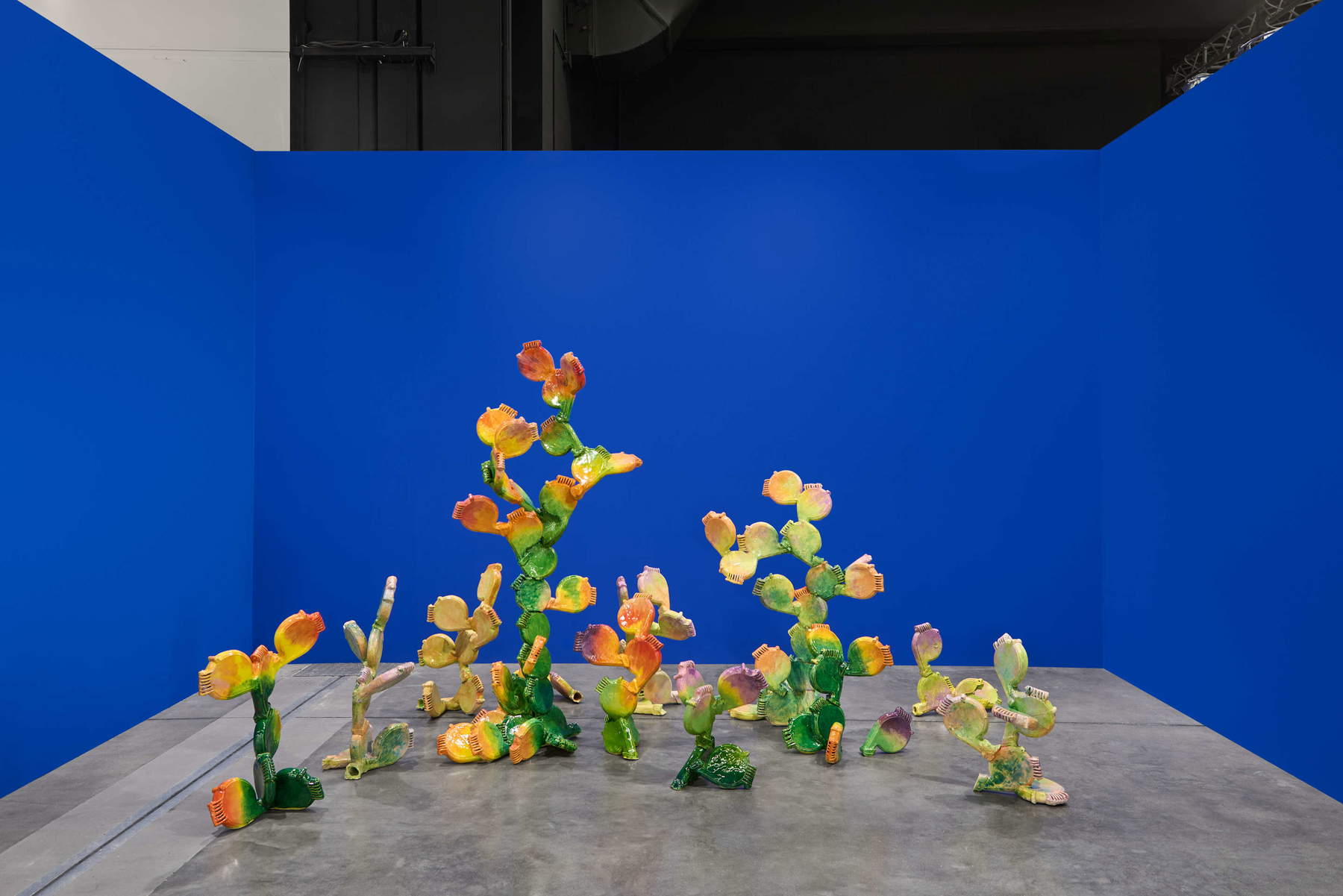 Luca Staccioli, Multifunctional queue eliminator kit (prickly pears) #4 (2024; glazed ceramic). Photo: Michela Pedranti
Luca Staccioli, Multifunctional queue eliminator kit (prickly pears) #4 (2024; glazed ceramic). Photo: Michela Pedranti
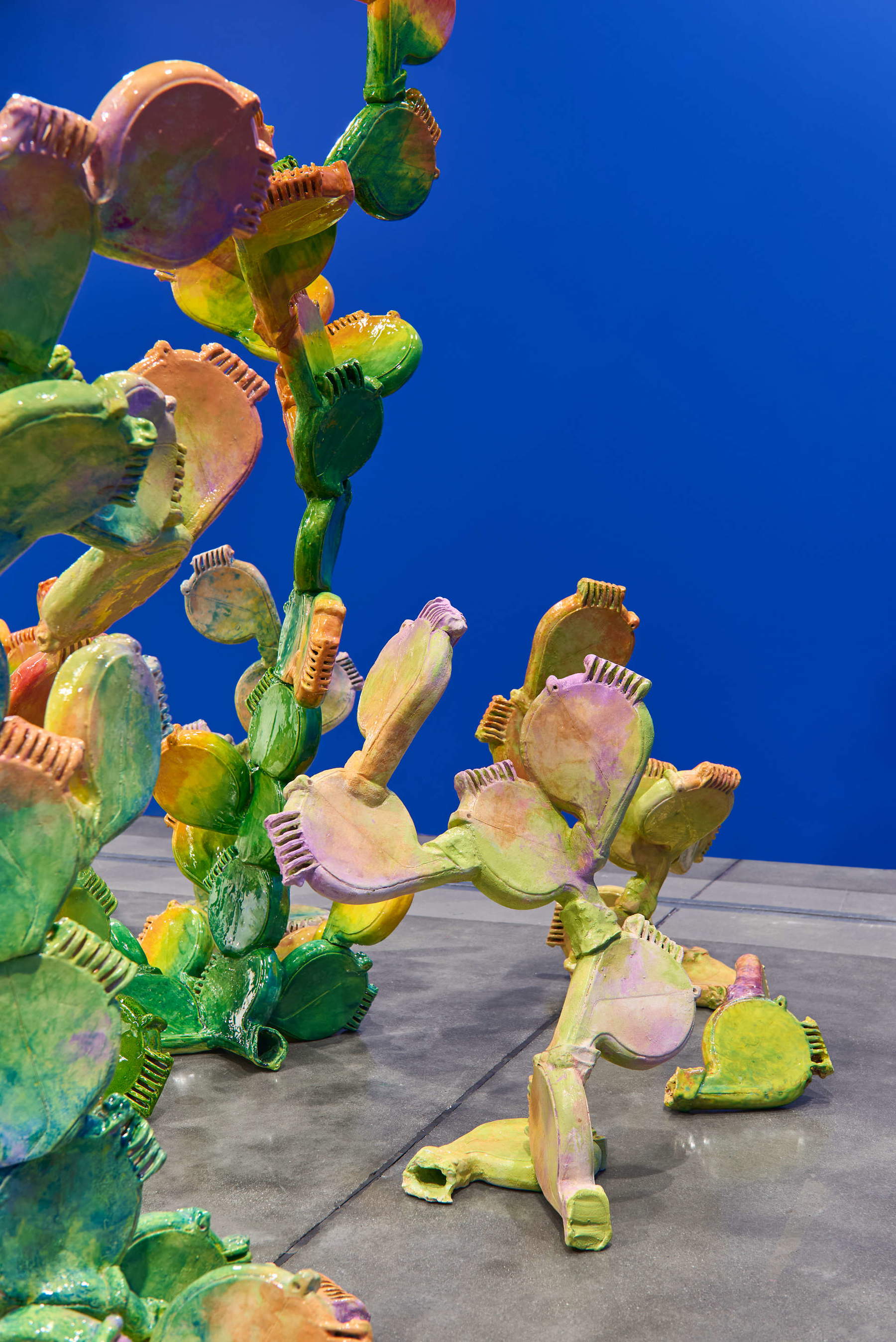
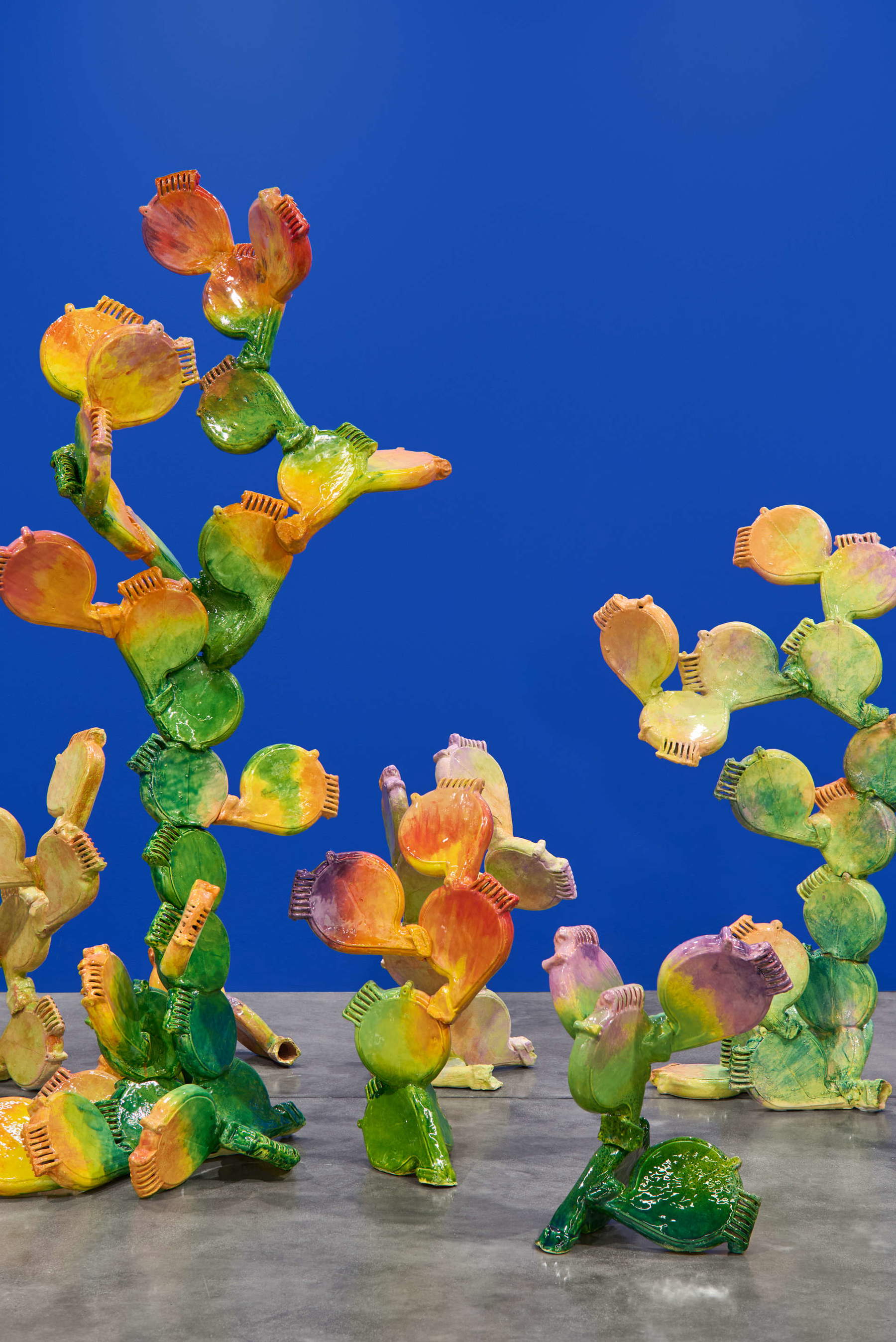
And although even in this latest series the denunciation that the artist carries out with his works against a massified and alienated society, ensnared by well-being, moreover charging it with a concern for ecology as well, this time the artist seems to be possibilistic toward positive implications as well, a rebirth and re-birth inherent in the generative power of nature. The fortunate reception of this latest work by Staccioli, both in terms of market and public response, marks a confirmation of the happy artistic path of the artist born in Imperia in 1988 but active for years in Milan.
After studying philosophy, Staccioli completed his artistic training first at the Academy of Fine Arts in Genoa and then at Naba in Milan, at the same time racking up a series of significant participations in group and solo exhibitions and fairs, exhibiting among others at the Casa Masaccio in San Giovanni Valdarno, the Fondazione Pini in Milan, Palazzo Marigliano in Naples and Artissima in Turin. The list of awards he has won is certainly no less: in 2017 he won the second Talent Video Awards, a project of Careof and the General Directorate for Contemporary Art and Architecture and Urban Peripheries of the MIBACT, and in 2018 the Fabbri Prize for Contemporary Art, as well as the Scholarship promoted by the Fondazione Pini, and finally in 2022 the Exibart Prize.
Over time, his artistic practice has led him to engage with ever-changing mediums, ranging from video to photography, sculpture and drawing, to embroidery and collage, languages he has used to investigate our everyday life. With an attitude poised between a sociologist and anthropologist, Luca Staccioli makes use of mundane experiences and objects, which reimagined propose reflections and open to unusual perspectives on multiple aspects, such as the clichés and mechanisms of image reception and their abuse by a media society, the cultural and hegemonic narratives of the Western community, and the myths of progress and production dictated by capitalism.
This exercise, though eclectic, never becomes merely conceptual, never demotes artistic practice, but centers its work on the study of the formal tensions underlying the techniques with which it interfaces, ready to subvert established canons, with sculptures that seem to take the magniloquent role that classicism has carved out for them little seriously or videos that mock all standards, as if underlying it was a constant desire to make involuted anti-icons in perpetual change and transformation.
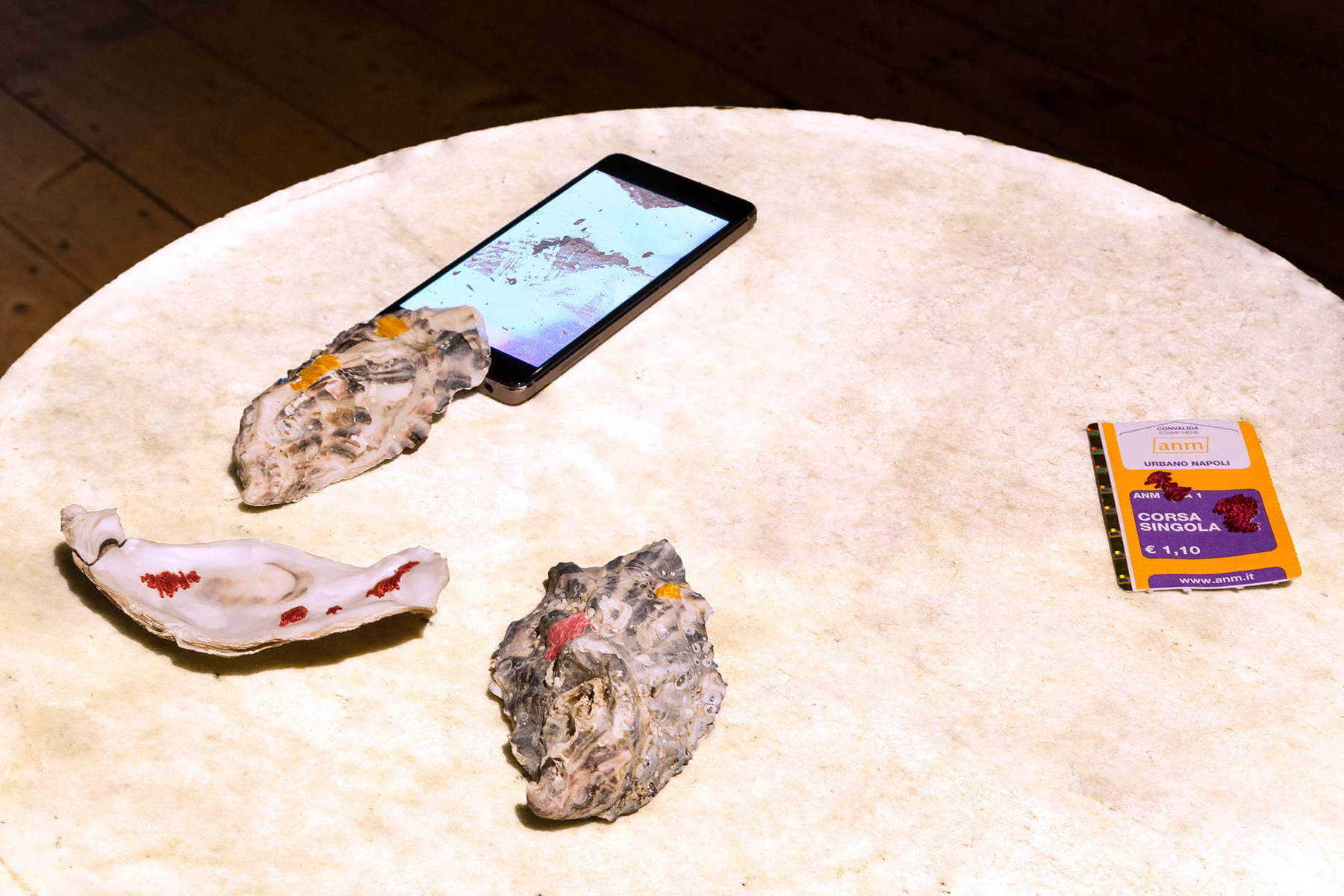


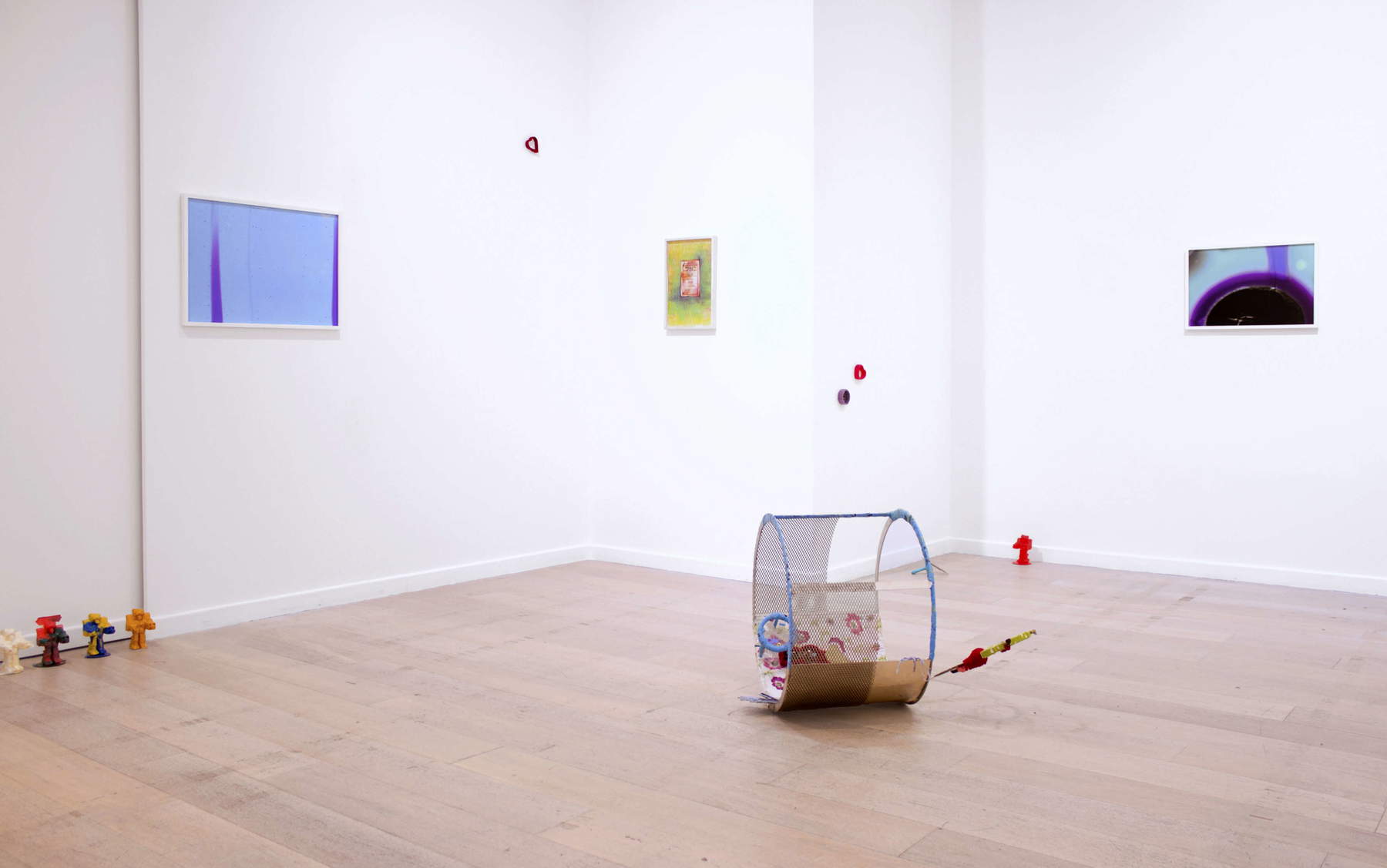

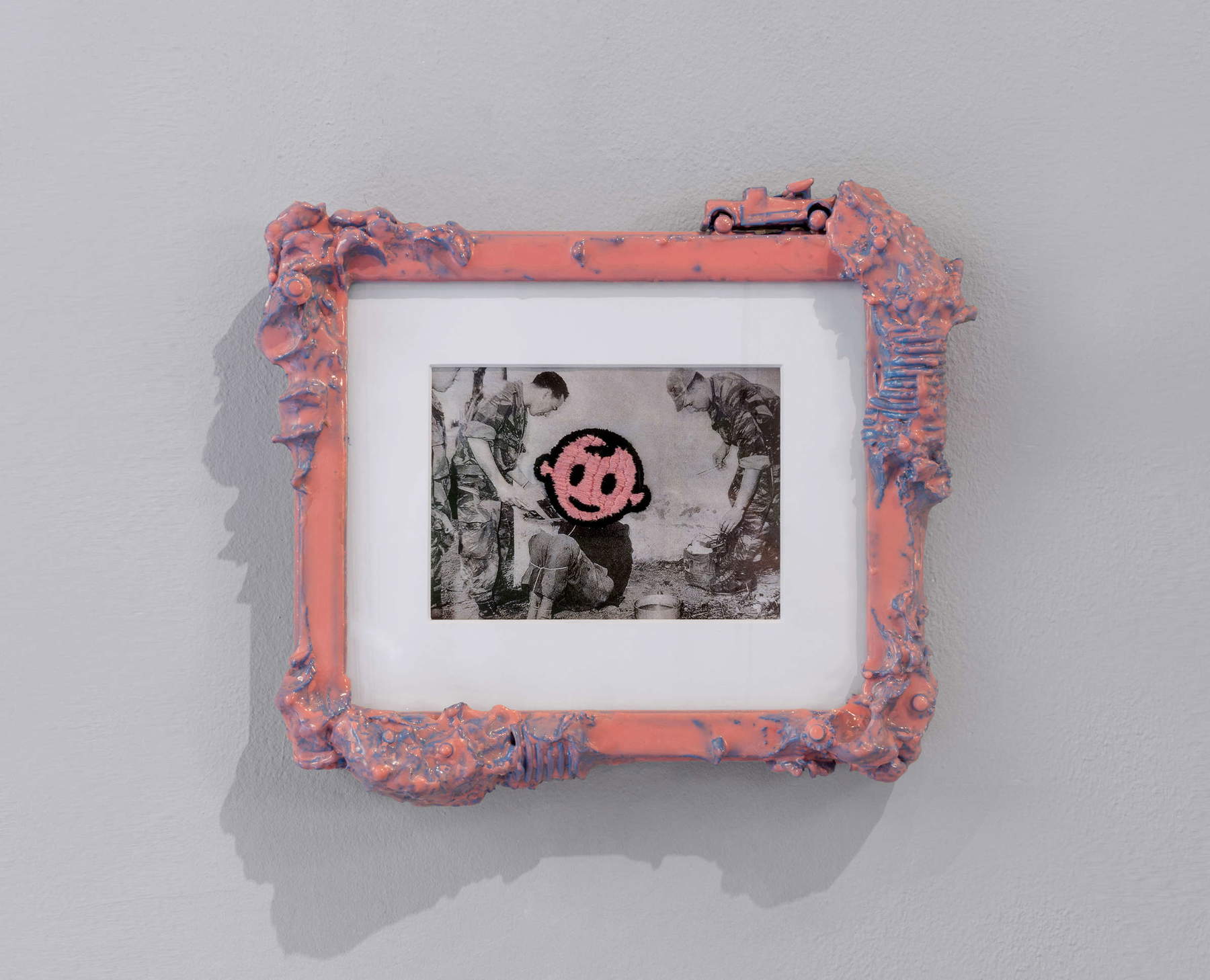

Staccioli reworks his personal experiences, stories of other lives, perhaps known or just crossed paths, anonymous memories from the web or who knows inferred from where, in order to reknit or rather stitch them back together to a common carrier, something that tells us about our identity. I did not use the verb “to stitch up” at random: the gesture is a founding practice of one of his earliest series, Inhabiting atlas, where the artist preserves objects from his travels and embroiders abstract forms on them, morphologies that call to mind the profiles of nations and continents, but which derive from the stains that time has deposited on the surface of the glass of a window in his studio in Moltedo. Packages of cigarettes, the remains of a soccer ball, streetcar tickets or oysters consumed on some trip are lifted from their anonymity become subjective memories and pages of a personal diary, but they also speak of boundaries that are becoming increasingly blurred, perhaps more for goods than for people, identities that are mestizo, origins that are being uprooted, and that make us advance questions about whether it still makes sense today to speak of different and foreign.
Such questions are also found in the video Was it me? Screen memories in which photographs and videos, sometimes archival others from today, alternate between an old colonial past of cultural and military imperialism and a more modern, economy-based one of mass tourism in search of an ’artifactual exoticism, showing the inconsistencies of the world one wants to represent through images and of the difficulty in defining the concepts of “self” and “other.”
In more recent works, however, Staccioli has begun to cultivate a more playful aspect, but without deintesifying his political and social engagement. Through that hybridization of languages and references, which is one of his most typical figures, the artist has chosen the horizon of play to pursue his investigation, with creative possibilities of absolute freedom, assembling different objects and giving them a new reading while maintaining their multiple natures: as Gombrich’s famous essay recounts, a broomstick for children can take on the representation of a horse, but without preventing them from seeing reality, that is, remaining a wooden stick. After all, as philosopher Prisca Amoroso noted, with play one world is created while another is put out of focus, without being entirely lost. This delineates a relationship that is not one of absolute freedom but neither of total constraint.
In the toy then there is also a disturbing dimension, as Staccioli points out, “a kind of education in life,” a gymnasium on the roles one will assume in society, for example the virile and fighting one for theman and the maternal and domestic one for the woman, and although the artist does not necessarily believe in a possibility of redemption for humanity through childhood, what fascinates him are the aspects that move away from the functionalization that are instead the dogma of our times.
Staccioli began to develop the theme in 2018 from the exhibition Donner à voir at the Fondazione Pini; on that occasion, starting from a story about a hypothetical ancestor with an adventurous life, spent in part fighting for the Foreign Legion, he reflected on the concepts of family imagery, but also of war and violence in history, to construct both individual and social identity. He carried the narrative forward through small resin toy sculptures, dioramas molded in pongo with camp scenes, childlike drawings of war, and a child with a grotesque aesthetic from an assemblage of household objects. In the Familiar Pics series drawings on paper towels, advertising and war images created collages on which he intervened by drawing on them, desensitizing alarming depictions, making them appealing and familiar. The same then were framed by frames that looked like malleable wax (although they were made of resin) with jutting inclusions that recalled a fairy world of childhood, effectively alluding to how much our contemporary world is now used to violence, and even the most brutal images have little impact on our living.
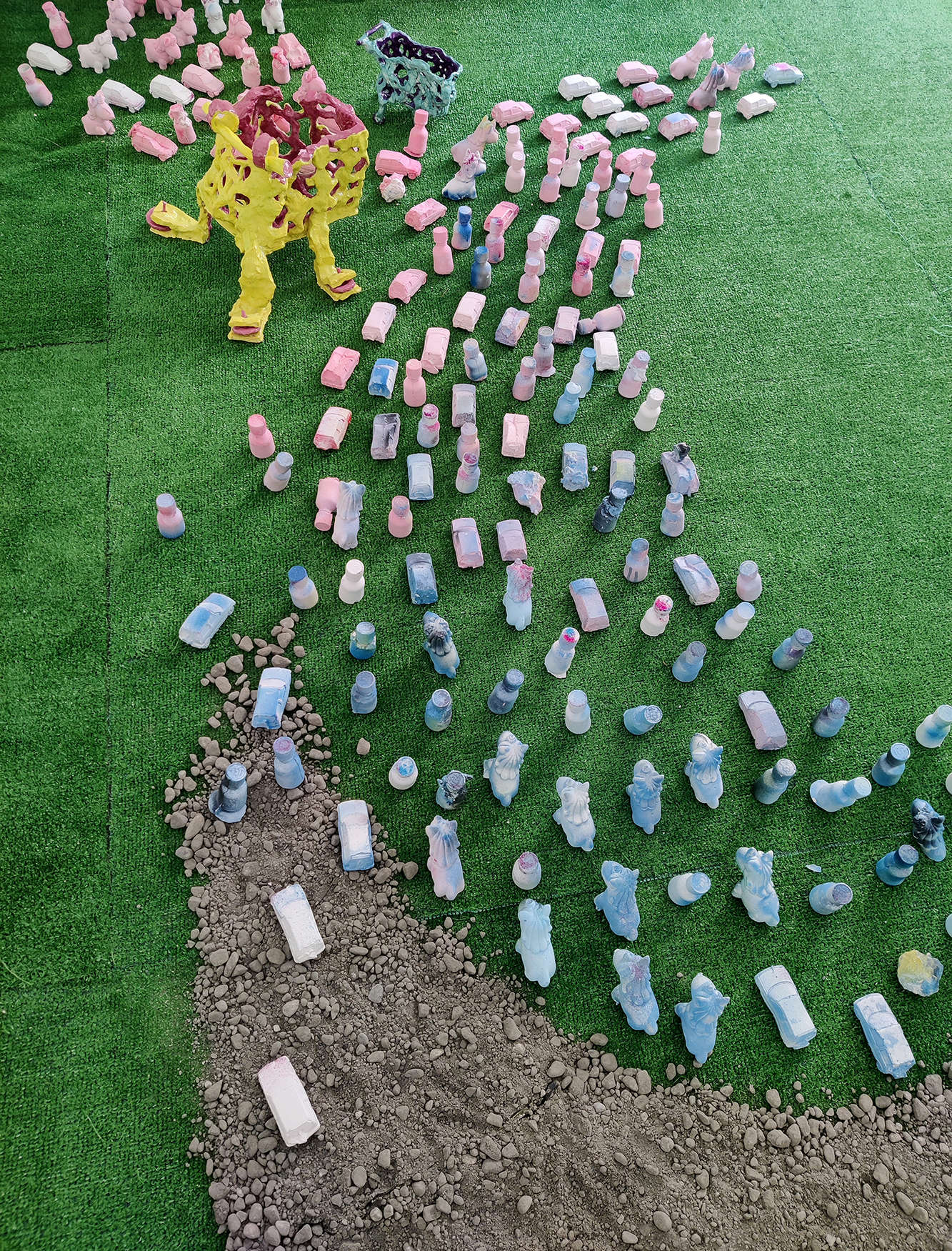
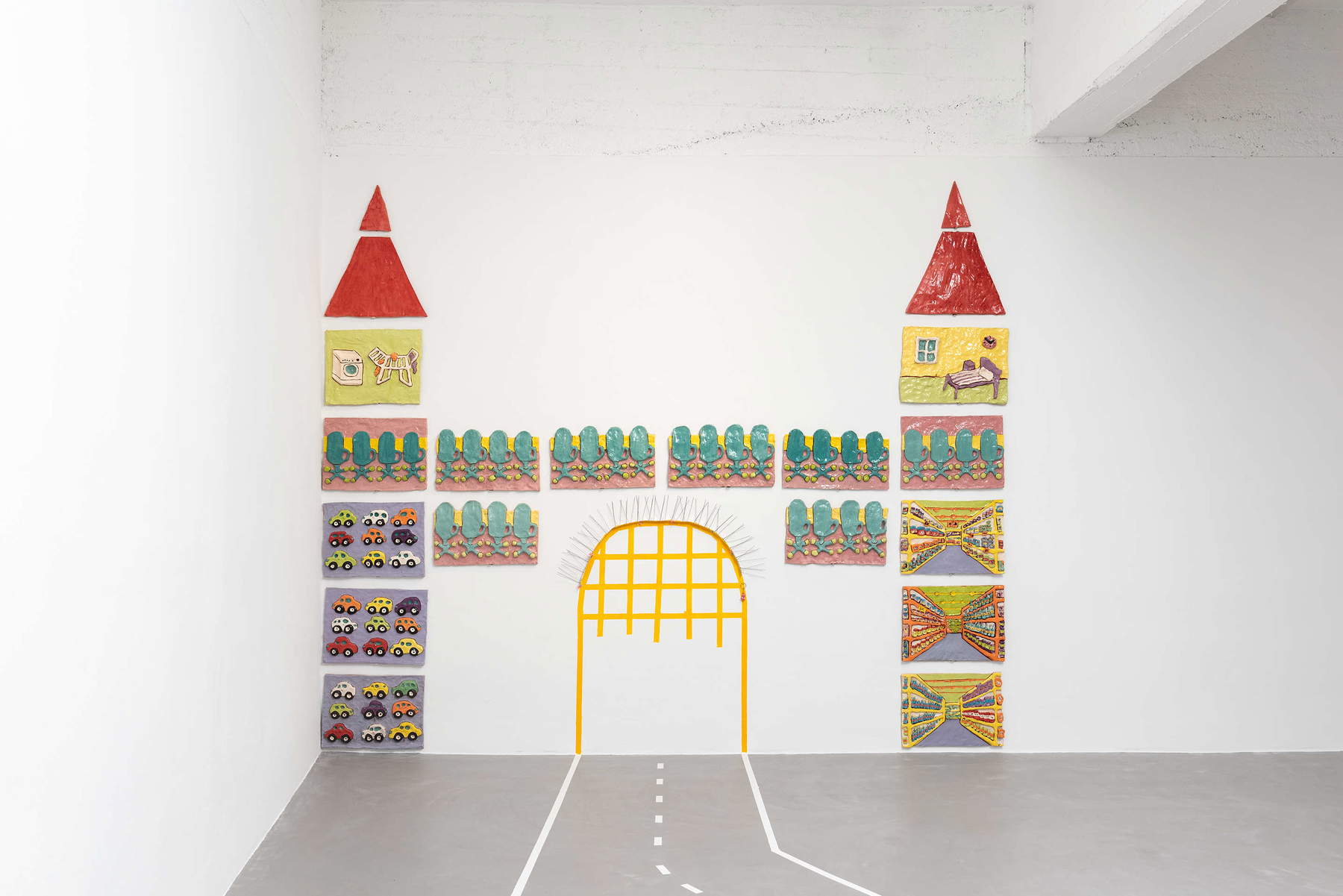

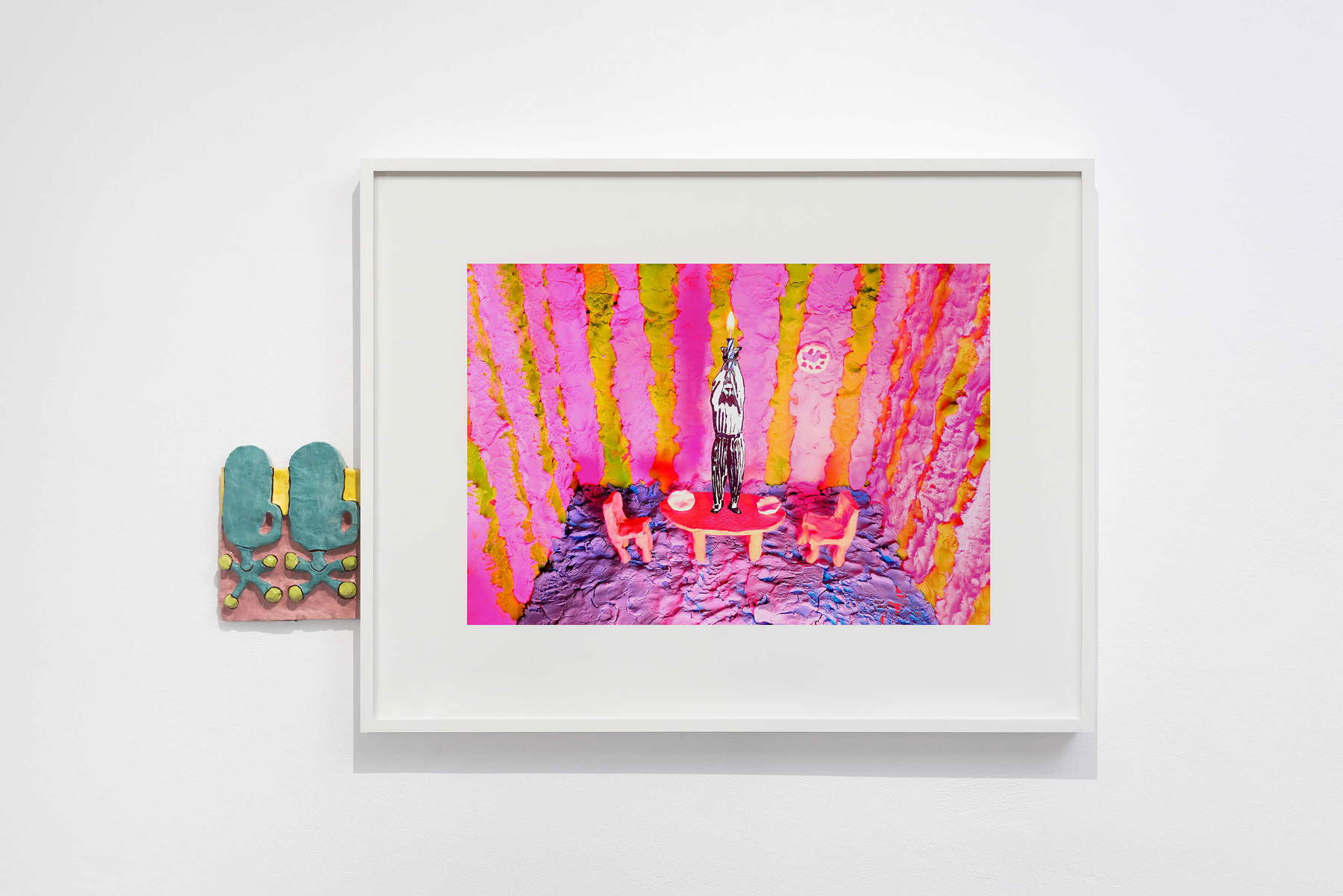


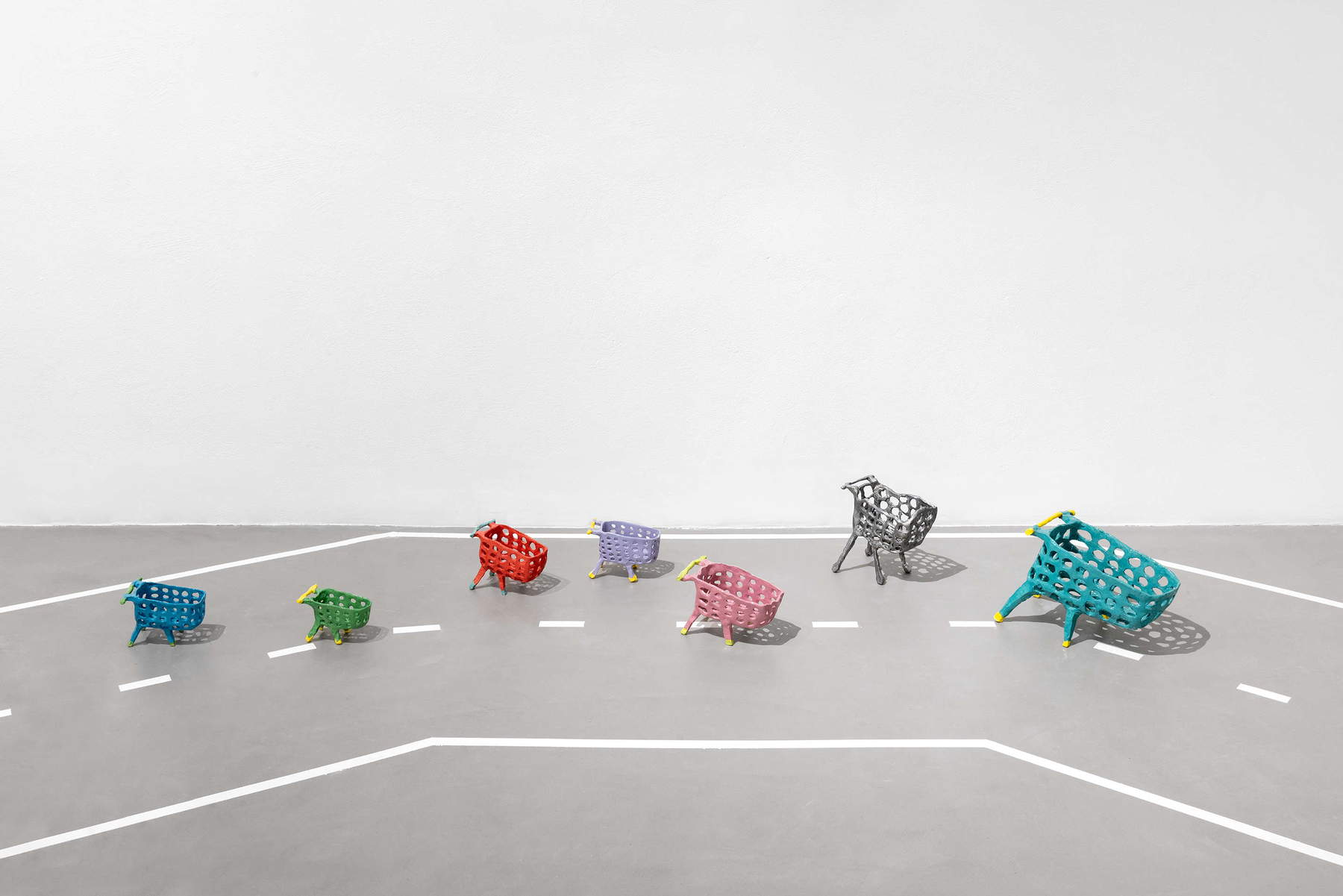
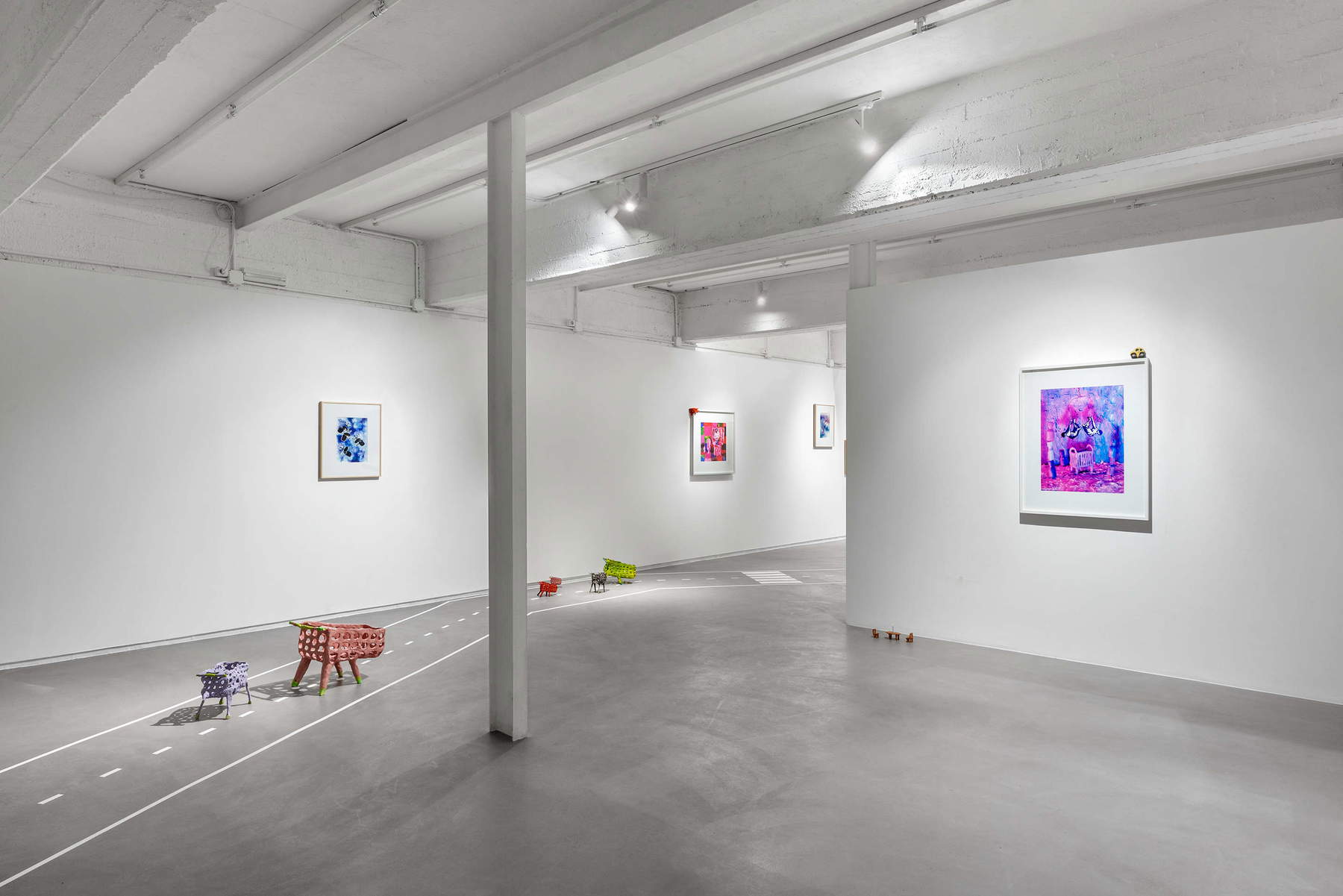
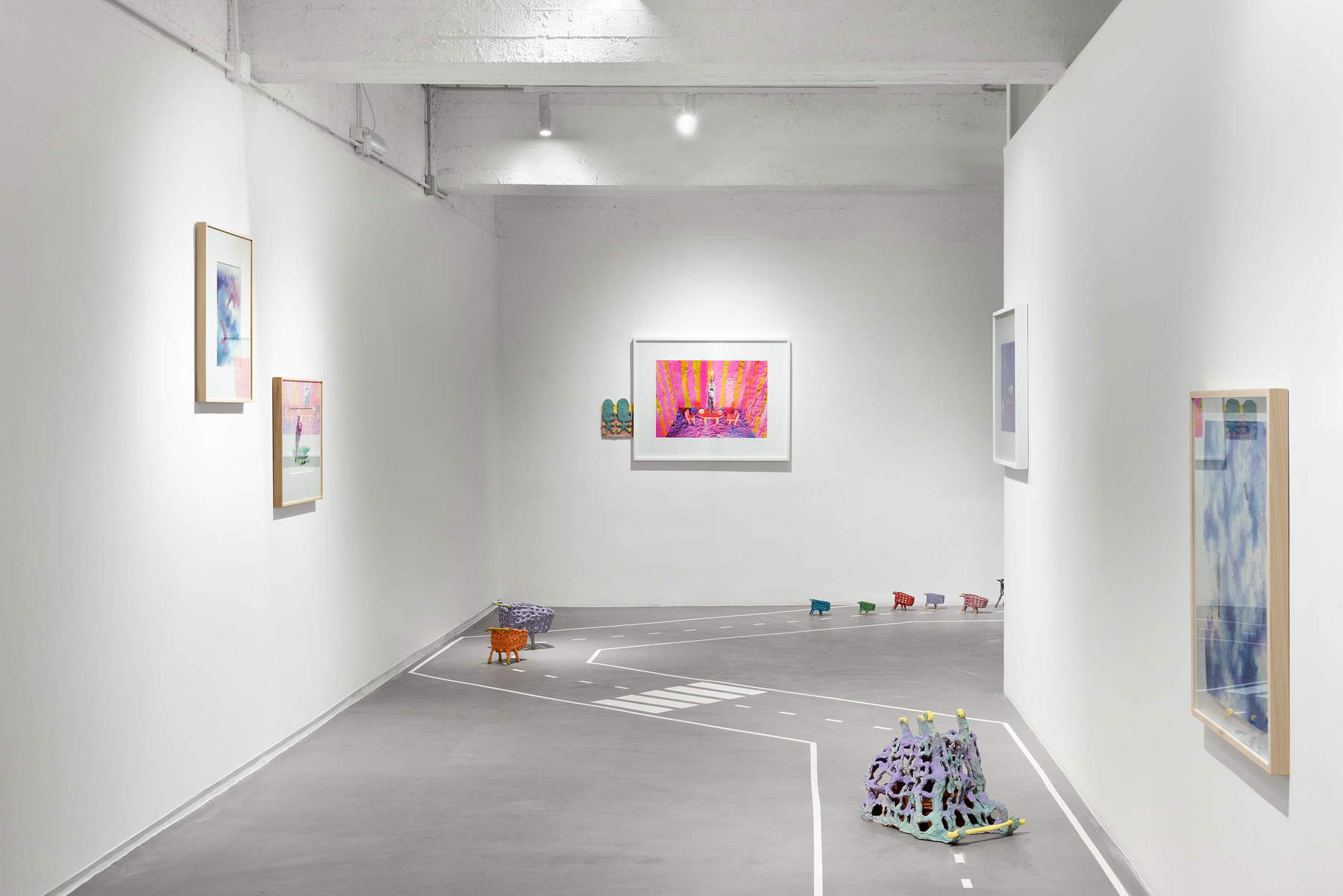
In Recreation, a disturbing diorama, of the kind that in history museums generally depict war scenes, became a playground tingling with tiny figurines engaged in creating a congested but orderly traffic formed by cars, shopping carts, unicorns and medicine bottles. Once again mixing the carefreeness of the childlike world with the cancerous idols of adulthood.
In early 2023 at Milan’s ArtNoble gallery Staccioli presents Wake Up Call, a point of arrival and synthesis of some of his lines of research.
The gallery space in Lambrate becomes a miniature city, along the streets come shaky shopping carts, ramshackle icons of our impulsiveness for consumption, in slow and inexorable progression toward Castello (of sand?), a large installation of an imaginative manor that came out of a child’s dream, composed of ceramic bas-reliefs with the weary epic of our times. Here, it materializes everything we are told we must aspire to in order to make a position for ourselves in society: a good job (perhaps in an office) that we will reach by car, willingly suffering every damn day the fate of being stuck as if in a disturbing puzzle in vehicular traffic composed of other us, whom we nonetheless hate, and then the aisles of a supermarket where we go to burn our savings and free time, and then at the end of this via crucis return to the squalor and loneliness of our domestic life. But Staccioli’s narrative is not patronizing; on the contrary, it becomes captivating and persuasive, in an aesthetic that apparently does not smell of menace.
Just as soft are the images of inmates, reworked into didò maquettes and then photographed, who decontextualized become funny actors in domestic affairs, find themselves engaged in diving contests, reckless pirouettes or table dances. The visit to the exhibition was then interspersed with the ringing of bells, an invitation to awaken from the dream or nightmare into which the artist had lowered the visitor.
Staccioli’s poetics are based on continuous short-circuits, the first of which presents a disenchanted view of our world through a dream aesthetic, a kind of use of play as a form of engagement, of creation and a form of protest. In this he is somewhat reminiscent of the approach of a twentieth-century art giant like Enrico Baj when he argued, “I think one of the strong hopes rests on the power of the imaginary. That does not prevent me from seeing the worst. But I do not see the acceleration of the worst as the preferred solution.”
Warning: the translation into English of the original Italian article was created using automatic tools. We undertake to review all articles, but we do not guarantee the total absence of inaccuracies in the translation due to the program. You can find the original by clicking on the ITA button. If you find any mistake,please contact us.



























